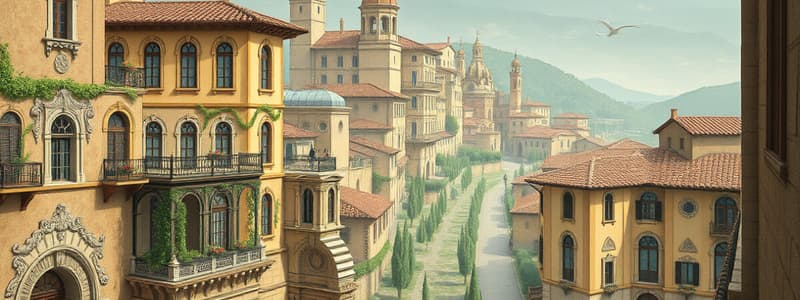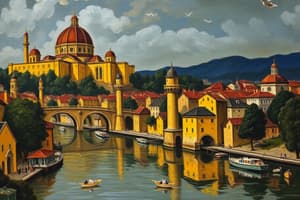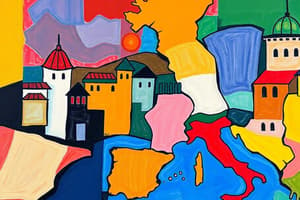Podcast
Questions and Answers
What political structure did Florence establish after breaking free from aristocratic rule?
What political structure did Florence establish after breaking free from aristocratic rule?
- Oligarchy
- Monarchy
- Republic (correct)
- Theocracy
Who was responsible for selecting members of the Signoria in Florence?
Who was responsible for selecting members of the Signoria in Florence?
- The pope
- The merchants
- The local nobility
- The gonfaloniere (correct)
How was Venice ruled compared to other city-republics in the region?
How was Venice ruled compared to other city-republics in the region?
- By a democratic assembly
- By hereditary titled rulers
- By a single elected president
- By a Great Council of local nobility (correct)
What was the main economic advantage that Venice held during this period?
What was the main economic advantage that Venice held during this period?
Which of the following factors contributed to the prosperity of city-republics like Florence and Venice?
Which of the following factors contributed to the prosperity of city-republics like Florence and Venice?
What was the primary role of the doge in Venice?
What was the primary role of the doge in Venice?
What currencies became international monetary standards during the late thirteenth century?
What currencies became international monetary standards during the late thirteenth century?
Which of the following statements about the governance of Pisa and Siena is accurate?
Which of the following statements about the governance of Pisa and Siena is accurate?
What distinguished the Venetian doges from dukes in other regions?
What distinguished the Venetian doges from dukes in other regions?
Which famous merchant traveled to Asia and returned to Venice with spices and silk?
Which famous merchant traveled to Asia and returned to Venice with spices and silk?
Flashcards are hidden until you start studying
Study Notes
Political Landscape of Italy (13th-14th Centuries)
- The Italian peninsula was divided into various political territories controlled by the papacy, Holy Roman Emperor, regional kings, and hereditary rulers like dukes.
- In Tuscany, powerful cities gained prosperity and demanded autonomy, evolving into independent states.
Rise of City-States
- Florence established a republic governed by the Signoria, consisting of a town council elected by guild members through the gonfaloniere.
- Pisa and Siena also achieved independence from feudal lords to form their own republics.
- Venice remained under local aristocratic rule, governed by the Great Council composed of nobility who inherited their positions.
Governance in Venice
- The Great Council appointed the doge, the chief magistrate, for life, emphasizing political acumen over birthright.
- This system allowed Venice to thrive economically and politically.
Economic Influence of Merchants
- The rise of trade and banking through merchants enhanced the economic power of city-states.
- Venice's navy dominated the Mediterranean, facilitating trade with North Africa and Asia.
- Notable merchants, including Marco Polo, brought back valuable goods such as spices and silk, boosting local economies.
Financial Innovations
- Florentine and Venetian currencies, the florin and ducat, emerged as international monetary standards.
- Italian bankers began extending loans to popes and kings, increasing financial interconnectedness and influence.
Cultural Developments
- The wealth generated in this era led to new patrons for the arts beyond traditional patrons like the Church and nobility, fostering artist prosperity.
- Visual arts shifted towards naturalism, helping communicate civic values, trade benefits, and religious piety to broader audiences.
- This cultural shift supported stronger community ties and widespread acceptance of political and religious entities.
Studying That Suits You
Use AI to generate personalized quizzes and flashcards to suit your learning preferences.




